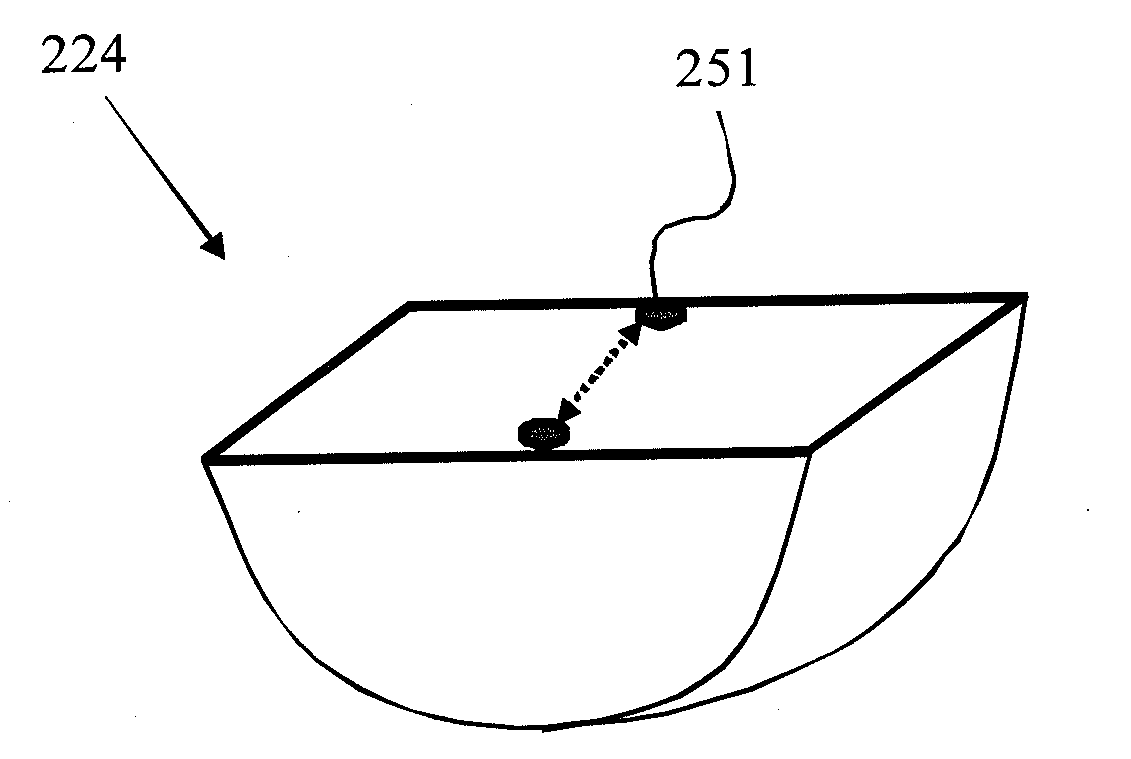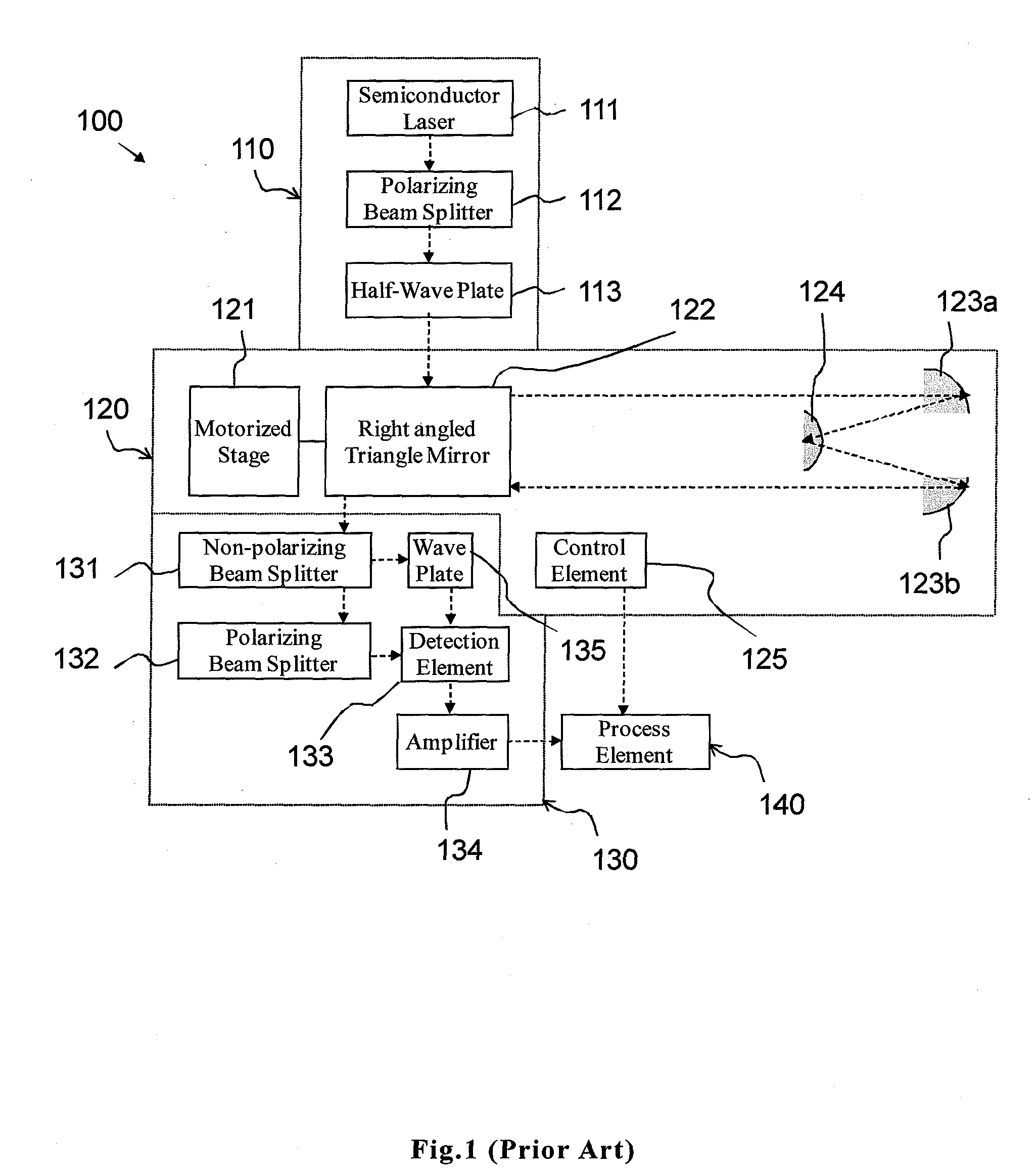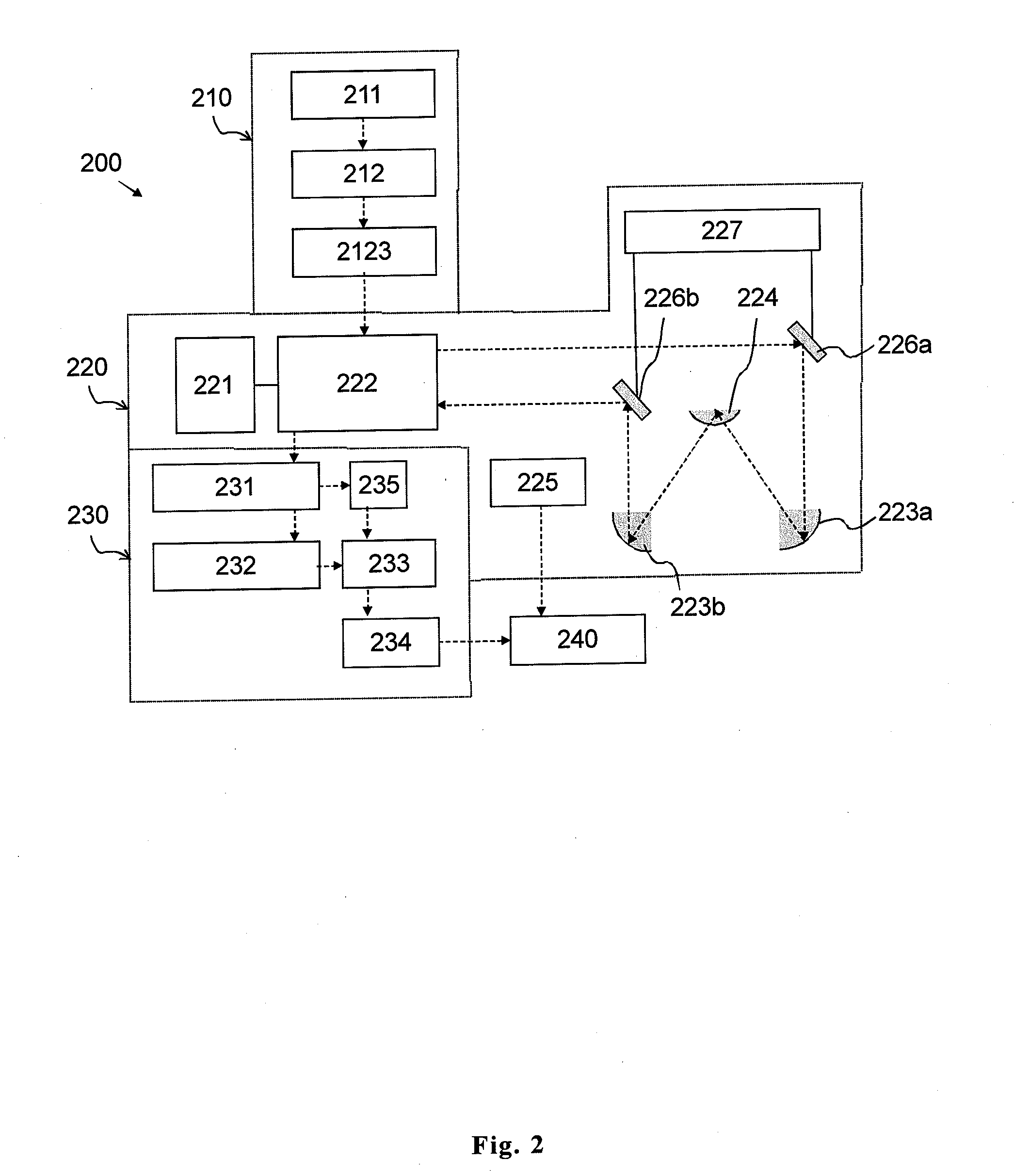Optical detection system
- Summary
- Abstract
- Description
- Claims
- Application Information
AI Technical Summary
Benefits of technology
Problems solved by technology
Method used
Image
Examples
Embodiment Construction
[0036]For clarity of disclosure, and not by way of limitation, the detailed description of the invention is divided into the subsections that follow.
[0037]To further illustrate the present invention, the following specific examples are provided.
[0038]FIG. 2 illustrates the optical detection system of the present invention and FIG. 3 illustrates the triangle mirror of the optical detection system of the present invention. In this embodiment, the optical detection system 200 of the present invention includes a light source unit 210, a control unit 220, a detection unit 230 and a process unit 240.
[0039]The light source unit 210 contains a semiconductor laser 211, a polarizing beam splitter 212 and a half-wave plate 213 The semiconductor laser 211 is to provide a light source, and the light is directed into the control unit 220 through polarizing beam splitter 212 and the half-wave plate 213. The semiconductor laser 211 can also be replaced by an LED or other light source, such as LED, ...
PUM
 Login to View More
Login to View More Abstract
Description
Claims
Application Information
 Login to View More
Login to View More - R&D
- Intellectual Property
- Life Sciences
- Materials
- Tech Scout
- Unparalleled Data Quality
- Higher Quality Content
- 60% Fewer Hallucinations
Browse by: Latest US Patents, China's latest patents, Technical Efficacy Thesaurus, Application Domain, Technology Topic, Popular Technical Reports.
© 2025 PatSnap. All rights reserved.Legal|Privacy policy|Modern Slavery Act Transparency Statement|Sitemap|About US| Contact US: help@patsnap.com



